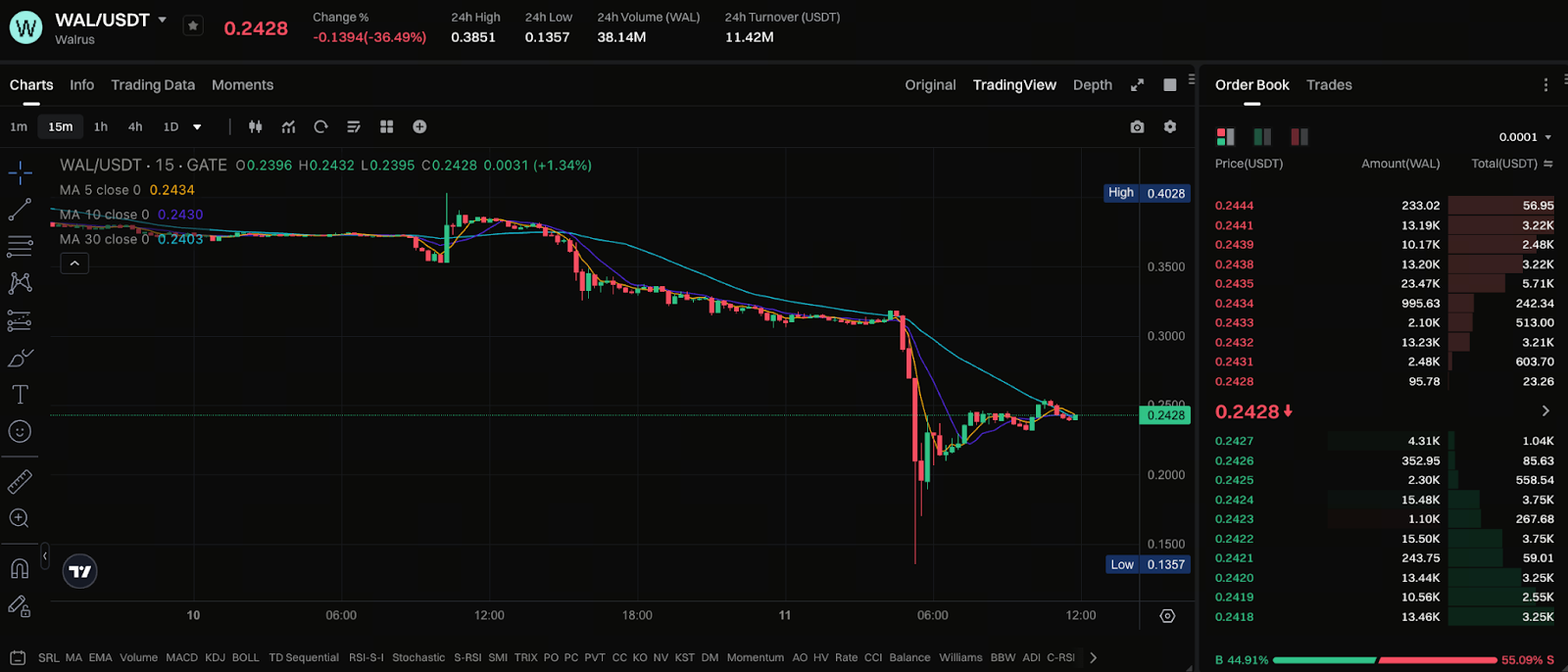WAL Token Beginner’s Guide: What is Walrus (WAL) and How to Seize Its Listing Opportunity
What is WAL?
WAL (Walrus) is a native utility token developed for decentralized storage services, used to pay storage fees, incentivize storage nodes, and provide staking rewards. The Walrus team designed WAL to serve as the ecosystem’s “currency,” enabling on-chain payments and facilitating governance decisions.
Core Functions and Tokenomics of WAL
WAL’s main functions include: enabling users to pay for storage services, rewarding nodes and stakers, and supporting governance voting. The project leverages token incentives to ensure active participation from storage nodes and employs mechanisms to help stabilize token price volatility within the ecosystem. Token supply, release schedule, and distribution structure all influence short-term and long-term price performance. Investors should review the token allocation chart and release plan before making decisions.
Latest Price and Market Indicators (Volatility, Trading Volume)

Chart: https://www.gate.com/trade/WAL_USDT
WAL’s price tends to fluctuate sharply in the short term—listing events, airdrops, or major announcements frequently trigger spikes in trading volume and volatility. Tracking trading volume, order book depth, and concentration of holdings helps investors evaluate short-term risk. If volume rises at critical price levels and the price consistently breaks resistance, it typically signals strong buying interest. Conversely, investors should approach a mismatch between volume and price with caution.
Beginner Guidance: Purchasing, Risk Management, and Long-Term Strategy
- Choose reputable exchanges: Trade on platforms that have completed KYC and compliance checks, and confirm that the trading pair (e.g., WAL / USDT) is available.
- Stagger entries and set stop-losses: Given high volatility, consider entering positions gradually and set clear stop-loss points to avoid going all-in at once.
- Analyze tokenomics: Pay attention to total supply, circulating supply, private sales, and release schedules, as these directly affect supply-side dynamics.
- Long-term allocation: If you believe in decentralized storage, WAL can be part of a long-term portfolio, but maintain prudent position sizes and diversify your holdings with stable assets to better manage risk.
- Monitor official announcements and community updates: Official news, mainnet functionality, and node on-chain data will affect WAL’s practical utility as time progresses.
Summary and Action Steps
WAL exemplifies the application of tokenomics in decentralized storage. Exchange listings and promotional activities may offer short-term opportunities, but long-term value depends on the project’s ability to generate sustained storage demand and establish a sustainable economic model. For newcomers, start by understanding the token’s utility, gradually enter positions, and implement robust risk controls. Stay updated via official announcements and major market platforms to access real-time price and liquidity information.
Related Articles

2025 BTC Price Prediction: BTC Trend Forecast Based on Technical and Macroeconomic Data

Flare Crypto Explained: What Is Flare Network and Why It Matters in 2025

Pi Coin Transaction Guide: How to Transfer to Gate.com

How to Use a Crypto Whale Tracker: Top Tool Recommendation for 2025 to Follow Whale Moves

What is N2: An AI-Driven Layer 2 Solution


